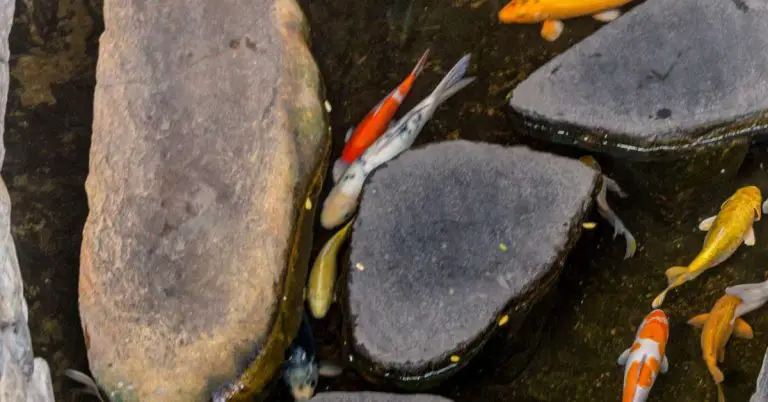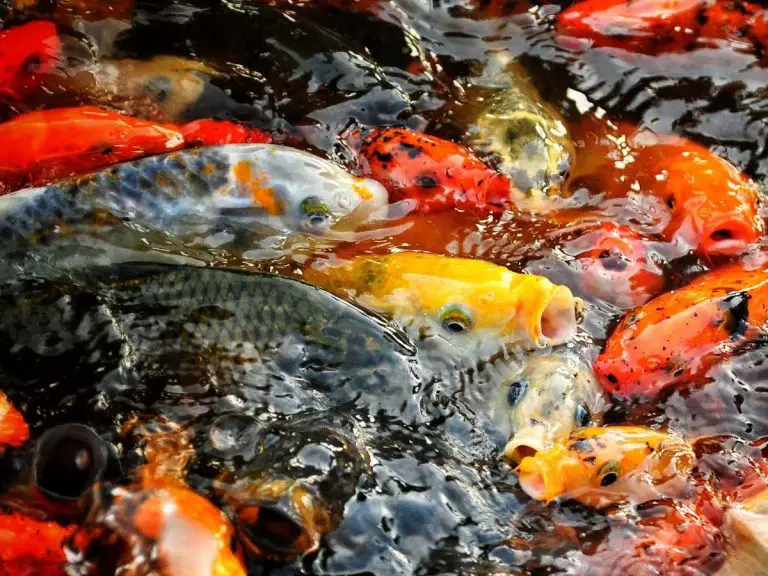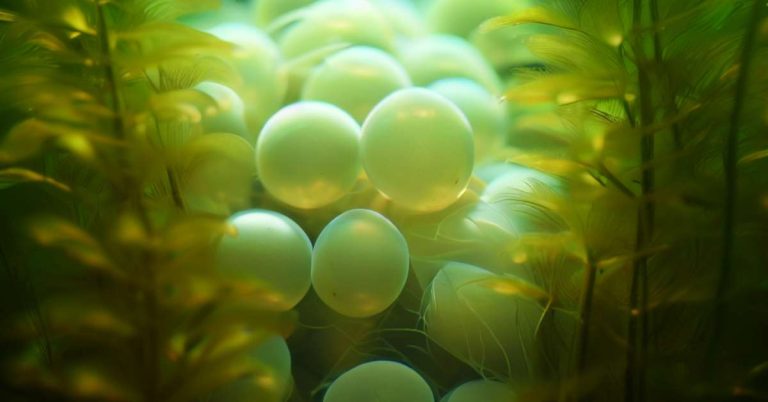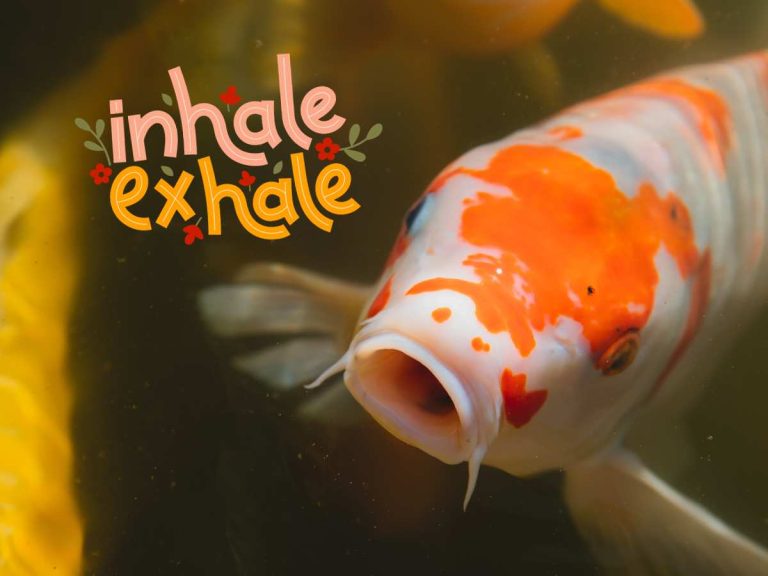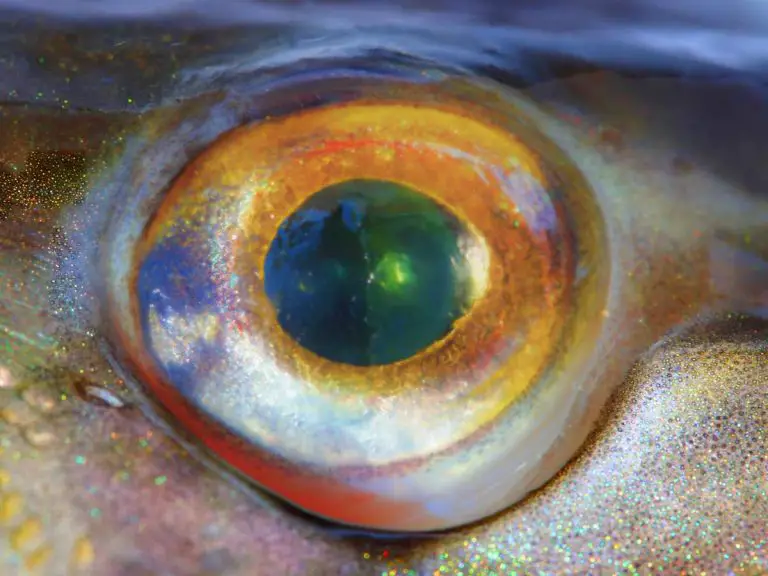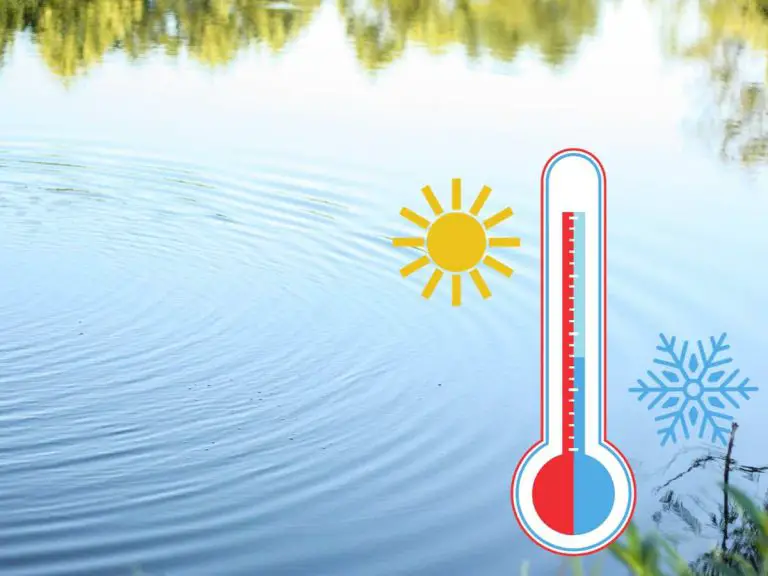Koi Hand Feeding Guide: How To Train Koi To Eat From Your Hand & Trust You
Interested in training your Koi to eat right out of your hand? Whether you’re an experienced koi fish owner or considering bringing these aquatic wonders into your life, this article has got you covered!
So, how exactly do you hand feed koi fish? Start by getting them used to your presence. Spend some time by the pond without feeding them so they see you as a friend, not just a food source. Once they’re comfortable, hold the food in your hand and slowly lower it into the water.
Over time, your koi will recognize you and even swim up excitedly when they see you!
Now that your interest is piqued, dive in and discover the fascinating world of hand feeding koi fish. Get ready to establish a deeper bond with these graceful creatures and become a pro at providing them with their daily sustenance.
Hopefully, we can make hand feeding koi fish an enjoyable and rewarding experience for both you and your finned friends!

Understanding the basics of hand feeding koi fish
Hand feeding your Koi offers numerous benefits for both you and your finned friends. It’s a great way to bond with your koi fish and develop a stronger connection. Plus, watching them eat right from your hand is simply amazing.
But before we get into the nitty-gritty, let’s cover some basics.
First things first, understanding the feeding behavior of koi fish is crucial. These magnificent creatures are known to be opportunistic eaters, meaning they will eat whenever food is available. However, it’s important to note that overfeeding can harm their health, so it’s essential to strike the right balance. Keep an eye on their behavior during feeding to ensure you’re not overdoing it.
Before you embark on the hand feeding adventure, there are a few precautions to consider. Make sure your koi fish are comfortable with regular feeding and have established a routine. This helps them associate your presence with food and increases the likelihood of successful hand feeding. Additionally, it’s crucial to cultivate a peaceful and calm environment during feeding time to minimize stress and distractions.
Now, let’s talk about why hand feeding is more than just a feeding method. Hand feeding offers excellent opportunities for bonding and socializing with your koi fish. By hand feeding them, you establish trust and familiarity, allowing them to recognize you as a friend rather than just a food source.
Regular interaction during feeding creates a strong bond between you and your koi fish, which can lead to a more fulfilling and enjoyable pond-keeping experience. It also provides an opportunity for observation, allowing you to monitor their health, behavior, and overall well-being.
Feeding behavior of koi fish
Koi fish are known for their voracious appetite and are always on the lookout for food. They will often swim to the surface or gather near the feeding area in anticipation of a meal. This behavior makes hand feeding particularly exciting since they readily approach your hand to grab a bite.
Observing their feeding behavior is crucial as it helps you understand their hunger cues. Look for signs of excitement, such as increased swimming activity and vigorous splashing, which indicate they’re ready to eat. It’s important to note that feeding them when they’re not hungry can lead to overfeeding, so it’s essential to feed them in moderation.
Precautions and considerations before hand feeding
Before you start hand feeding your koi fish, there are a few precautions to keep in mind. Firstly, ensure that your hands are clean and free from any harmful substances. This not only keeps your fish healthy but also maintains the water quality in your pond. Avoid using lotions, soaps, or other chemicals on your hands prior to feeding.
Additionally, be aware of your koi fish’s temperament. Some individuals may be more skittish or shy, requiring a bit more time and patience to become comfortable with hand feeding. Always approach them gently and avoid making sudden movements that could startle them. Remember, building trust takes time, so be patient and persistent in your efforts.
Related Post: How to identify male and female Koi fish
Choosing the right hand feeding techniques
When feeding your koi fish by hand, there are a variety of techniques you can use. One common approach is the palm feeding method, where you place a small amount of food in your hand and let the koi fish swim up to eat from your open palm.
Another method is the fingertip feeding technique, where you hold a small portion of food between your fingertips and gently release it into the water as the koi fish approach.
Factors to consider when selecting a technique
When choosing a hand feeding technique, it’s important to consider several factors. The first is your personal comfort level. Some people may feel more at ease using their palm, while others prefer the precision of using their fingertips.
You should also consider the size and temperament of your koi fish. Smaller fish may be more manageable with the fingertip technique, while larger fish might require the palm feeding method.
Assessing the temperament of koi fish for hand feeding
Before attempting hand feeding, it’s crucial to assess the temperament of your koi fish. Some fish may be more skittish or aggressive, making it difficult to hand feed them. It’s important to observe their behavior during regular feeding to gauge their willingness to approach your hand.
If your koi fish seem comfortable and confident during regular feeding, they may be more open to hand feeding. However, if they show signs of aggression or fear, it may be best to wait and continue building trust before attempting hand feeding.
Preparing for hand feeding koi fish
Before you can start hand feeding your koi fish, there are a few important preparations you need to make. These will ensure that your feeding sessions are safe, comfortable, and enjoyable for both you and your fish.
Creating a suitable feeding environment
To create the ideal feeding environment for your koi fish, you need to make sure that the water conditions are just right. Koi fish thrive in clean and well-maintained water, so it’s crucial to keep their habitat pristine.
Here is a reference table outlining the ideal water conditions for hand feeding koi fish:
| Water Parameter | Ideal Range |
|---|---|
| pH Level | 7.0 – 8.5 |
| Temperature | 68°F – 75°F (20°C – 24°C) |
| Ammonia | 0 ppm |
| Nitrite | 0 ppm |
| Nitrate | Less than 20 ppm |
In addition to maintaining these water parameters, ensure that the feeding area is free from any debris or contaminants. This will prevent any potential health risks and allow your koi fish to feed comfortably.
Selecting appropriate koi fish feed
Choosing the right koi fish feed is essential for their overall health and well-being. There are various types of koi fish food available in the market, so it’s important to select one that meets their nutritional needs.
Look for a high-quality fish food that is specially formulated for koi. Consider factors such as the fish’s age, size, and nutritional requirements when making your selection. Pellets are a popular choice as they are easy to handle and provide a balanced diet for koi fish.
Establishing a feeding schedule
Establishing a regular feeding schedule is crucial for maintaining the health and well-being of your koi fish. Consistency is key when it comes to hand feeding.
Determine a feeding schedule that works best for your lifestyle and the needs of your fish. A good rule of thumb is to feed your koi fish once or twice a day, but take care not to overfeed as this can lead to health issues. Monitor your fish’s appetite and adjust the feeding schedule accordingly.
Step-by-step guide for hand feeding koi fish
Feeding koi fish by hand can be a rewarding experience that strengthens the bond between you and your fish. Here is a step-by-step guide to help you master this skill:
Step 1: Gaining the trust and confidence of koi fish
In order to successfully hand feed your koi fish, it’s important to build trust and create a sense of safety for them. Here are some tips to establish a strong connection:
- Spend time near the pond, talking to your fish in a calm and soothing voice.
- Offer them food from a distance initially, slowly getting closer over time.
- Avoid sudden movements or loud noises that may startle the fish.
- Avoid making direct eye contact, as this can be seen as a threat.
- Be patient and allow the fish to approach you at their own pace.
Step 2: Proper hand placement and positioning
Once your koi fish have grown comfortable with your presence, it’s important to learn how to position your hand correctly for feeding:
| Dos | Don’ts |
|---|---|
| Extend your fingers slightly, creating a gentle platform for the fish to eat from. | Avoid making sudden movements that could startle the fish. |
| Keep your hand relaxed and flat, ensuring a comfortable feeding experience for both you and the fish. | Avoid overcrowding the fish by using only one hand to feed at a time. |
| Hold your hand underwater, keeping it at the surface near the feeding area. | Avoid touching the fish or their sensitive fins during feeding. |
Step 3: Feeding technique and motion
Once your hand is properly positioned, it’s time to focus on the feeding technique. Here are a few examples of effective feeding motions:
- Gently release a small amount of food into the water, allowing the fish to approach and eat at their own pace.
- Move your hand in a slow, sweeping motion to distribute the food evenly throughout the pond.
- Experiment with different feeding motions to see which ones your koi fish respond to best.
By following these steps and using the right hand feeding techniques, you can create a special connection with your koi fish while providing them with the nourishment they need.
Tips for successful koi hand feeding
Maintaining proper hand hygiene is crucial when hand feeding koi fish. Make sure to wash your hands thoroughly with soap and water before and after each feeding session. This helps prevent the spread of bacteria and keeps your koi fish healthy.
Using appropriate feeding tools and accessories can also enhance the feeding experience. Look for long-handled feeding tools specifically designed for koi fish. These tools allow you to extend your reach without disturbing the water too much. Additionally, consider using a feeding ring or tray to confine the food in one area and keep it from drifting away.
While hand feeding, it’s important to observe your koi fish’s behavior closely. Pay attention to their response to different feeding motions and adjust accordingly. Some koi fish may prefer a gentle tossing motion, while others might respond better to a steady hand and slow movement. Take note of what works best for your fish and stick to that technique.
Common mistakes to avoid when hand feeding koi
One common mistake to avoid is overfeeding your koi fish. Remember, they have small stomachs and can easily be overfed. Overfeeding can lead to digestive problems, poor water quality, and even obesity. It’s best to feed them small amounts several times a day rather than one large meal. If you notice uneaten food floating in the water after feeding, you’ve likely overfed.
Another mistake is feeding your koi fish inadequate or inappropriate food. Koi fish have specific dietary needs, and it’s essential to provide them with a balanced diet. Invest in high-quality koi fish pellets or flakes that contain all the necessary nutrients. Avoid feeding them bread, as it can cause bloating and negatively impact their health.
Lastly, don’t ignore signs of stress or aggression during feeding. If you notice your koi fish becoming aggressive towards each other or if they start darting around anxiously, it may indicate a problem. Remove any aggressive fish from the feeding area and monitor their behavior closely. Address any issues promptly to ensure a peaceful feeding environment.
Common mistakes to avoid when hand feeding koi
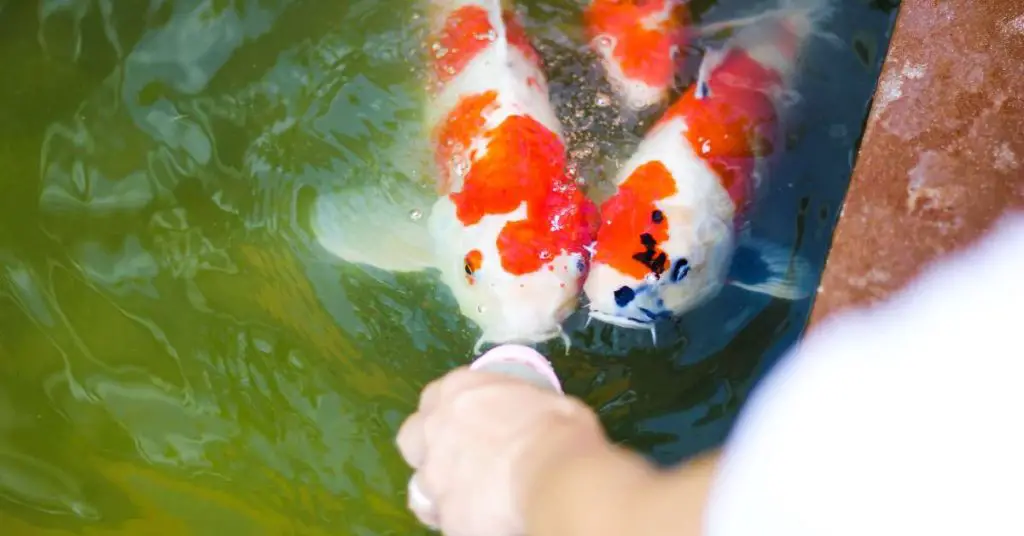
Overfeeding and its consequences
One of the most common mistakes that koi fish owners make when hand feeding is overfeeding their fish. While it’s natural to want to spoil our beloved koi, feeding them too much can have negative consequences for their health. Overfeeding can lead to obesity, poor water quality, and even digestive issues.
When hand feeding your koi, it’s important to remember that they have small stomachs and can only eat a certain amount at a time. It’s better to underfeed than overfeed, as koi can always find natural food sources in the pond if they are still hungry.
Feeding inadequate or inappropriate food
Koi have specific dietary requirements, and feeding them inadequate or inappropriate food can be detrimental to their health. Some common mistakes include feeding them bread, which lacks essential nutrients, or using low-quality fish food that may contain fillers and additives.
To ensure the health and well-being of your koi, it’s important to choose high-quality fish food that is specifically formulated for koi. These foods typically contain a balanced mix of proteins, fats, and vitamins that koi need for optimal growth and development.
Ignoring signs of stress or aggression during feeding
Hand feeding koi fish can be a wonderful bonding experience, but it’s important to pay attention to their behavior during feeding. Ignoring signs of stress or aggression can lead to injury, as koi may become too excited and accidentally nip at your hand or each other.
Some common signs of stress or aggression include excessive splashing, chasing, or bumping into each other. If you observe these behaviors, it’s best to stop hand feeding and allow the koi to calm down before resuming. Additionally, if any koi exhibit signs of injury or aggression towards others, it may be necessary to separate them to prevent further harm.
Final Thoughts
So there you have it, a comprehensive guide on hand feeding koi fish. We’ve covered the basics of why hand feeding is important for bonding and socialization, and we’ve discussed the feeding behavior of koi fish along with the precautions to take before hand feeding.
We then explored different hand feeding techniques and factors to consider when selecting the right one for your koi fish. We also provided a step-by-step guide for hand feeding, including tips for gaining their trust, proper hand placement, and effective feeding motions.
To ensure successful hand feeding, we shared tips on maintaining proper hand hygiene, using appropriate feeding tools and accessories, and observing koi fish behavior during feeding. Additionally, we highlighted common mistakes to avoid, such as overfeeding and feeding inadequate food.
Key Takeaways:
- Hand feeding koi fish is crucial for bonding and socialization.
- Koi fish have specific feeding behaviors that can help you understand their needs.
- Before hand feeding, make sure to take necessary precautions and consider the temperament of your koi fish.
- Creating a suitable feeding environment with ideal water conditions is important.
- Choosing appropriate koi fish feed and establishing a feeding schedule are key.
- Gaining the trust and confidence of your koi fish is essential for successful hand feeding.
- Proper hand placement, positioning, and feeding technique are crucial during feeding.
- Maintaining hand hygiene, using the right tools, and observing fish behavior are important for success.
- Avoid overfeeding, feeding inappropriate food, and ignoring signs of stress or aggression during feeding.
With these key points in mind, you now have all the knowledge you need to start hand feeding your koi fish. So go ahead, give it a try, and enjoy the magical bond that can be created through this intimate interaction.
Related Questions
Can koi fish be trained to eat from your hand?
Yes, koi fish can be trained to eat from your hand. By following the step-by-step guide provided in this article, you can gradually build trust and confidence with your koi fish, allowing them to feel comfortable taking food directly from your hand. It is important to be patient and consistent in your approach to hand feeding, as it may take some time for the fish to become accustomed to this behavior.
What kind of food should I hand feed my koi fish?
When hand feeding koi fish, it is important to use appropriate koi fish feed that is specifically designed for their nutritional needs. Look for high-quality pellets or sticks that provide a balanced diet and contain essential nutrients. Avoid feeding them human food or low-quality feeds, as they can be detrimental to their health. Consult with a fish expert or local pet store for recommendations on the best feed options for your koi fish.

